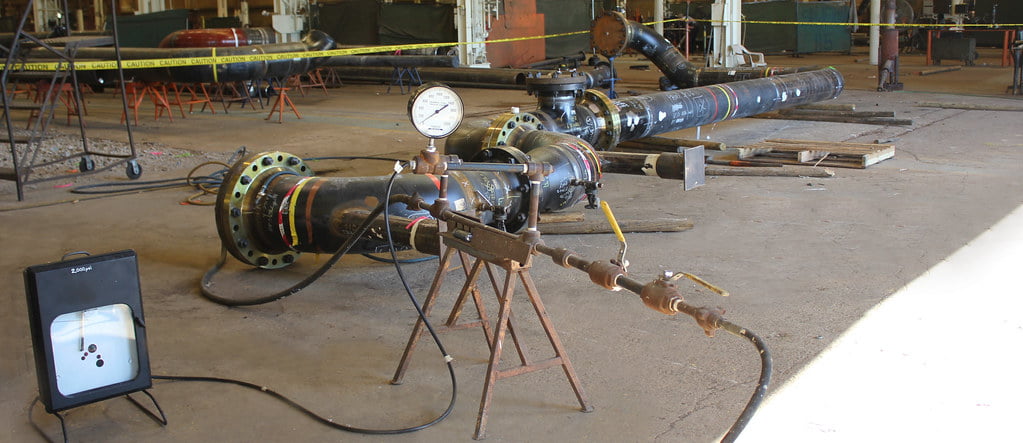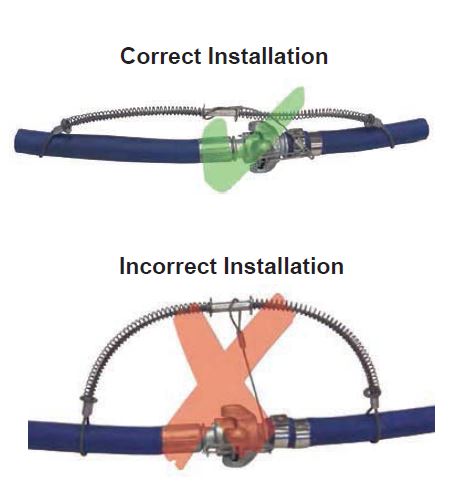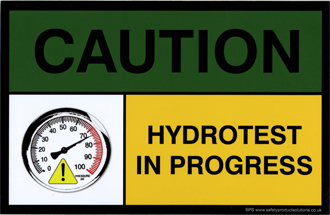
Hydro test, also known as hydrostatic test, is a critical procedure performed in various industries to assess the integrity and reliability of a system. This test involves pressurizing the system with water to a predetermined level and holding it for a specified duration to identify leaks, evaluate welded joints, and determine the system’s capacity. By subjecting the system to water pressure, any weaknesses or failures can be detected, enabling necessary repairs or improvements.
Purpose of Hydro Test
- Identifying Leaks: The primary purpose of a hydro test is to identify any leaks in the system. By pressurizing the system with water, even small leaks become evident, ensuring that they can be addressed before the system is put into operation.
- Checking Welded Joint Strength: Hydro tests are crucial for assessing the strength of welded joints in a system. The applied pressure helps determine whether the welds can withstand the anticipated working conditions without failure or deformation.
- Evaluating System Capacity: Hydro tests provide insights into the capacity of the system by examining its ability to sustain the required pressure over a specified period. If the pressure falls during the test, it indicates potential issues that need to be addressed before the system can be considered safe and operational.
Hazards of Hydro Test
While hydro tests are essential for ensuring system reliability, it’s crucial to be aware of the associated hazards to maintain a safe testing environment. Some common hazards include:
- Potential Component Failure: The test can expose weaknesses in the system, leading to breaking or failure of lines, gaskets, flanges, or gauges. It is essential to monitor the system closely during the test to prevent any sudden failures.
- Air Entrapment: During the filling process, air can become trapped inside the pipe, leading to inaccurate test results and potential safety risks. Proper air venting procedures must be followed to minimize air pockets.
- Risks with Engine-Operated Pumps: The usage of engine-operated pumps introduces additional risks due to the high pressures involved. Proper training, maintenance, and adherence to safety protocols are necessary to mitigate these risks effectively.
- Pressure Gauge Issues: Underrated or non-calibrated pressure gauges can inadvertently cause an increase in pressure beyond the desired level. Calibrated gauges should be used to ensure accurate readings and prevent over-pressurization.
- Substandard Support: Inadequate or substandard support for the system during the test can lead to instability and potential hazards. Proper structural support should be in place to ensure the safety of personnel and the integrity of the system.
- Pressure Safety Valve (PSV) Failure: Failure of pressure safety valves can result in uncontrolled pressure buildup, risking damage to the system and endangering personnel. Regular inspection and maintenance of PSVs are essential to prevent such failures.
Hydro Test Safety Precautions
To minimize risks and ensure the safety of personnel involved in hydro tests, the following precautions should be taken:
- Barricade and Warning Boards: The hydro test area should be barricaded, and warning boards must be placed to prevent unauthorized personnel from entering the test zone.
- Calibrated Pressure Gauges and Valves: Only calibrated pressure gauges and pressure safety valves should be used to ensure accurate readings and reliable safety measures.
- Pressure gauge calibration is crucial to ensure the accuracy of the gauge’s readings. It involves comparing the gauge’s output to a known standard or applying a known pressure to the gauge. Calibration should be performed by third-party vendors to ensure unbiased and reliable results.
- Appropriate Rating of Fittings and Gaskets: Fittings, pressure gauges, vent valves, and gaskets must have suitable ratings to withstand the test pressure without failure.
- Compliance with Line Class Specifications: Flanges and plates used during the test should adhere to the specified line class requirements to ensure compatibility and prevent potential failures.
- Qualified Welders and Approved Welding: All temporary welding required for the hydro test should be performed by qualified welders and approved by the Client’s QA/QC department to maintain the integrity of the system.
- Proper Air Venting: An air vent should be provided at the highest elevation of the system to facilitate the removal of air pockets before pressurization.
- Gradual Filling of Lines: Lines should be gradually filled with water while keeping the vent open to allow for controlled pressurization and sufficient time for personnel to inspect for leaks.
- Venting to Remove Air Pockets: Before pressurization, it is crucial to ensure that the line is adequately vented to remove any remaining air pockets. This step helps avoid inaccurate test results and potential hazards.
- Controlled Pressure Increase: The pressure should be raised gradually and under control, allowing the pipes to strain and giving personnel sufficient time to identify leaks or anomalies.
- Multiple Pressure Gauges: At least two pressure gauges should be installed—one at the lowest point and another at the highest point in the system—to monitor pressure differentials accurately.
- Crew Safety Precautions: Hydro testing crew members should avoid staying in the direction of blind flanges to minimize the risk of injury in case of flange rupture.
- Adequate Equipment Rating: Hoses, piping, gaskets, connectors, and clamps used during the test should have an adequate rating to withstand the expected pressure without failure.
- Whip Lash Arrestor: Whip lash arrestors should be installed at hose connections to prevent sudden hose disconnections and subsequent whipping movements.
- Personnel Safety: Personnel should not approach the system when it is under high pressure to prevent potential accidents or injuries.
- Limited Access: Only essential and trained personnel should be allowed at the hydro test work location to minimize the risk of accidents and ensure proper supervision.
- Obstacle-Free Work Location: The access path to the work location should be free from any obstacles, allowing safe movement of personnel and equipment.
- Supervisor Presence: Supervisors should be present at the work location during hydro testing activities to provide guidance, monitor safety protocols, and respond to any emergencies promptly.
- Risk Assessment: Conducting a thorough risk assessment before conducting any hydro test job is essential to identify potential hazards, implement appropriate safety measures, and ensure a safe testing environment.

Conclusion
Hydro tests are vital for ensuring the safety and reliability of various systems. By identifying leaks, evaluating welded joint strength, and assessing the system’s capacity, hydro tests help prevent failures and accidents in operational environments. However, it is crucial to prioritize safety during these tests. By following proper safety precautions, using calibrated equipment, and conducting thorough risk assessments, the risks associated with hydro tests can be effectively minimized. Remember, safety should always be the top priority when performing hydro tests.
FAQs (Frequently Asked Questions)
1. What is a hydro test? A hydro test is a procedure that involves pressurizing a system with water to evaluate its integrity, identify leaks, and assess the strength of welded joints.
2. Why is it necessary to check for leaks during a hydro test? Checking for leaks is crucial because even small leaks can indicate potential weaknesses or failures in the system. Addressing leaks before the system is operational ensures safety and prevents further damage.
3. What are the hazards of hydro testing? Hazards include potential failures of lines, gaskets, flanges, or gauges, air entrapment, risks associated with engine-operated pumps, pressure gauge issues, substandard support, and pressure safety valve failures.
4. How can personnel safety be ensured during a hydro test? Personnel safety can be ensured by implementing safety precautions such as barricading the test area, using calibrated equipment, following appropriate ratings for fittings and valves, and restricting access to trained personnel only.
5. Why is a risk assessment important for hydro test jobs? A risk assessment helps identify potential hazards and enables the implementation of appropriate safety measures. It ensures that risks are mitigated and the hydro test is performed in a safe and controlled manner.


Assalamwaalikum bhai saab,
Very nice,I go through the entire hazards & preventions but one thing missing that before going to start some documents required, if u give details about this it’s exactly fantastic.
Walaikum Assalam. noted
Excellent website for Safety Professionals
How we can calculate the PSV capacity while performing hydrotesting activity.
BEFORE HYDRO TEST PSV CALIBRATION SHOULD BE DONE FROM APPROVED 3RD PARTY COMPANY, YOU CAN SEE CAPACITY IN 3RD PARTY CERTIFICATE.
The line Hydrotest pressure is 2850 kPag, but during the testing it builds up to 3200 kPag. The Hydrotest pressure of 2850 kPag is based on MAWP maximum allowable working pressure. Will the integrity of the piping system been compromised? Though no leakage found after the testing.